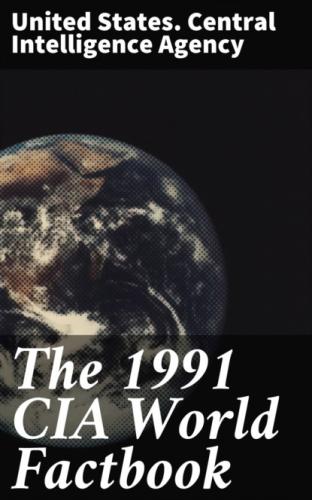_#_Judicial branch: Supreme Court (Cour Supreme)
_#_Leaders:
Chief of State—President Pierre BUYOYA (since 9 September 1987);
Head of Government Prime Minister Adrien SIBOMANA (since 26
October 1988)
_#_Political parties and leaders: only party—National Party of Unity and Progress (UPRONA), President Pierre BUYOYA, chairman, and Nicolas MAYUGI, secretary general
_#_Suffrage: universal adult at age NA
_#_Elections:
National Assembly—dissolved after the coup of 3 September 1987;
note—The National Unity Charter outlining the principles for constitutional government was adopted by a national referendum on 5 February 1991
_#_Communists: no Communist party
_#_Member of: ACCT, ACP, AfDB, CCC, CEEAC, CEPGL, ECA, FAO, G-77, GATT, IBRD, ICAO, IDA, IFAD, IFC, ILO, IMF, INTERPOL, ITU, LORCS, NAM, OAU, UN, UNCTAD, UNESCO, UNIDO, UPU, WHO, WIPO, WMO, WTO
_#_Diplomatic representation: Ambassador Julien KAVAKURE; Chancery at Suite 212, 2233 Wisconsin Avenue NW, Washington DC 20007; telephone (202) 342–2574;
US—Ambassador Cynthia Shepherd PERRY; Embassy at Avenue du Zaire,
Bujumbura (mailing address is B. P. 1720, Avenue des Etats-Unis,
Bujumbura); telephone 234–54 through 56
_#_Flag: divided by a white diagonal cross into red panels (top and bottom) and green panels (hoist side and outer side) with a white disk superimposed at the center bearing three red six-pointed stars outlined in green arranged in a triangular design (one star above, two stars below)
_*Economy #_Overview: A landlocked, resource-poor country in an early stage of economic development, Burundi is predominately agricultural with only a few basic industries. Its economic health depends on the coffee crop, which accounts for an average 90% of foreign exchange earnings each year. The ability to pay for imports therefore continues to rest largely on the vagaries of the climate and the international coffee market.
_#_GDP: $1.1 billion, per capita $200; real growth rate 1.5% (1989)
_#_Inflation rate (consumer prices): 11.7% (1989)
_#_Unemployment rate: NA%
_#_Budget: revenues $158 million; expenditures $204 million, including capital expenditures of $131 million (1989 est.)
_#_Exports: $81 million (f.o.b., 1989);
commodities—coffee 88%, tea, hides, and skins;
partners—EC 83%, US 5%, Asia 2%
_#_Imports: $197 million (c.i.f., 1989);
commodities—capital goods 31%, petroleum products 15%, foodstuffs, consumer goods;
partners—EC 57%, Asia 23%, US 3%
_#_External debt: $957 million (December 1990 est.)
_#_Industrial production: real growth rate 5.1% (1986); accounts for about 10% of GDP
_#_Electricity: 51,000 kW capacity; 105 million kWh produced, 19 kWh per capita (1989)
_#_Industries: light consumer goods such as blankets, shoes, soap; assembly of imports; public works construction; food processing
_#_Agriculture: accounts for 60% of GDP; 90% of population dependent on subsistence farming; marginally self-sufficient in food production; cash crops—coffee, cotton, tea; food crops—corn, sorghum, sweet potatoes, bananas, manioc; livestock—meat, milk, hides, and skins
_#_Economic aid: US commitments, including Ex-Im (FY70–89), $71 million; Western (non-US) countries, ODA and OOF bilateral commitments (1970–88), $10.1 billion; OPEC bilateral aid (1979–89), $32 million; Communist countries (1970–89), $175 million
_#_Currency: Burundi franc (plural—francs); 1 Burundi franc (FBu) = 100 centimes
_#_Exchange rates: Burundi francs (FBu) per US$1—163.29 (January 1991), 171.26 (1990), 158.67 (1989), 140.40 (1988), 123.56 (1987), 114.17 (1986), 120.69 (1985)
_#_Fiscal year: calendar year
_*Communications #_Highways: 5,900 km total; 400 km paved, 2,500 km gravel or laterite, 3,000 km improved or unimproved earth
_#_Inland waterways: Lake Tanganyika
_#_Ports: Bujumbura (lake port) connects to transportation systems of Tanzania and Zaire
_#_Civil air: 1 major transport aircraft
_#_Airports: 8 total, 7 usable; 1 with permanent-surface runways; none with runways over 3,659 m; 1 with runways 2,440–3,659 m; none with runways 1,220 to 2,439 m
_#_Telecommunications: sparse system of wire, radiocommunications, and low-capacity radio relay links; 8,000 telephones; stations—2 AM, 2 FM, 1 TV; 1 Indian Ocean INTELSAT earth station
_*Defense Forces #_Branches: Army (includes naval and air units); paramilitary Gendarmerie
_#_Manpower availability: males 15–49, 1,268,342; 661,888 fit for military service; 64,538 reach military age (16) annually
_#Defense expenditures: $33 million, 3.1% of GDP (1988) % @Cambodia *Geography #_Total area: 181,040 km2; land area: 176,520 km2
_#_Comparative area: slightly smaller than Oklahoma
_#_Land boundaries: 2,572 km total; Laos 541 km, Thailand 803 km, Vietnam 1,228 km
_#_Coastline: 443 km
_#_Maritime claims:
Contiguous zone: 24 nm;
Continental shelf: 200 nm;
Exclusive economic zone: 200 nm;
Territorial sea: 12 nm
_#_Disputes: offshore islands and three sections of the boundary with Vietnam are in dispute; maritime boundary with Vietnam not defined; occupied by Vietnam on 25 December 1978
_#_Climate: tropical; rainy, monsoon season (May to October); dry season (December to March); little seasonal temperature variation
_#_Terrain: mostly low, flat plains; mountains in southwest and north
_#_Natural resources: timber, gemstones, some iron ore, manganese, phosphates, hydropower potential
_#_Land use: arable land 16%; permanent crops 1%; meadows and pastures 3%; forest and woodland 76%; other 4%; includes irrigated 1%
_#_Environment: a land of paddies and forests dominated by Mekong River and Tonle Sap
_#_Note: buffer between Thailand and Vietnam
_*People #_Population: 7,146,386 (July 1991), growth rate 2.2% (1991)
_#_Birth rate: 38 births/1,000 population (1991)
_#_Death rate: 16 deaths/1,000 population (1991)
_#_Net migration rate: 0 migrants/1,000 population (1991)
_#_Infant mortality rate: 125 deaths/1,000 live births (1991)
_#_Life expectancy at birth: 48 years male, 51 years female (1991)
_#_Total fertility rate: 4.5 children born/woman (1991)
_#_Nationality: noun—Cambodian(s); adjective—Cambodian
_#_Ethnic divisions: Khmer 90%, Chinese 5%, other 5%
_#_Religion: Theravada Buddhism 95%, other 5%
_#_Language:
